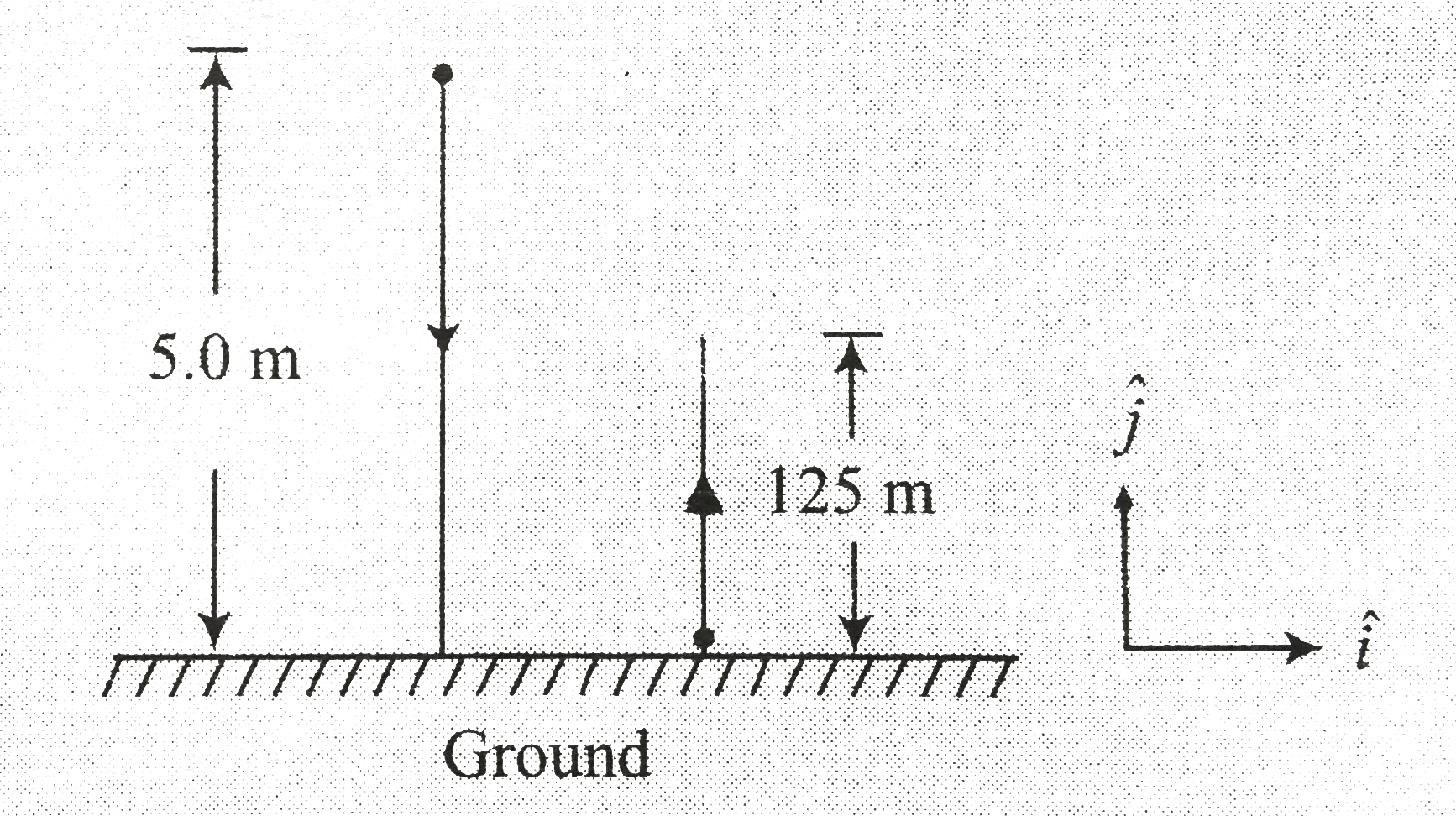A ball of mass 20 g falls from a height of 10 m and after striking the ground.It rebounds from the ground to a height of 8 m .
(a) Calculate:
(i)The kinetic energy of the ball just before striking the ground ,and
(ii)The loss in kinetic energy of the ball on striking the ground,and
(ii)the loss in kinetic energy of the ball on striking the ground.
(b)What happens to the loss in kinetic energy in part(ii) ?
Take g=10 m s−2 Neglect air friction .
To solve the problem step by step, we will calculate the kinetic energy of the ball just before it strikes the ground, the loss in kinetic energy upon striking the ground, and discuss what happens to the lost energy.
Step 1: Calculate the potential energy at the height of 10 m
The potential energy (PE) of the ball at a height h is given by the formula:
PE=m⋅g⋅h
where:
- m = mass of the ball = 20 g = 0.02 kg (since 1 g = 0.001 kg)
- g = acceleration due to gravity = 10 m/s²
- h = height = 10 m
Substituting the values:
PE=0.02kg⋅10m/s2⋅10m=2J
Step 2: Calculate the kinetic energy just before striking the ground
As the ball falls, its potential energy converts into kinetic energy (KE). Just before it strikes the ground, all the potential energy has converted into kinetic energy:
KE=PE=2J
Step 3: Calculate the potential energy after rebounding to a height of 8 m
After rebounding, the ball reaches a height of 8 m. We will calculate the potential energy at this height:
PErebound=m⋅g⋅hrebound
where hrebound=8m.
Substituting the values:
PErebound=0.02kg⋅10m/s2⋅8m=1.6J
Step 4: Calculate the loss in kinetic energy on striking the ground
The loss in kinetic energy (KE loss) when the ball strikes the ground is the difference between the kinetic energy just before hitting the ground and the potential energy after rebounding:
KEloss=KE−PErebound
Substituting the values:
KEloss=2J−1.6J=0.4J
Step 5: Discuss what happens to the loss in kinetic energy
The loss in kinetic energy (0.4 J) is transformed into other forms of energy, primarily sound energy and thermal energy, due to the inelastic collision with the ground. This energy is dissipated in the environment and is not recoverable as mechanical energy.
Summary of Answers:
(a)
(i) The kinetic energy of the ball just before striking the ground = 2 J
(ii) The loss in kinetic energy of the ball on striking the ground = 0.4 J
(iii) The lost energy is transformed into sound and thermal energy due to the inelastic collision.
PE=m⋅g⋅h
where:
- m = mass of the ball = 20 g = 0.02 kg (since 1 g = 0.001 kg)
- g = acceleration due to gravity = 10 m/s²
- h = height = 10 m
PE=0.02kg⋅10m/s2⋅10m=2J
KE=PE=2J
PErebound=m⋅g⋅hrebound
where hrebound=8m.
PErebound=0.02kg⋅10m/s2⋅8m=1.6J
KEloss=KE−PErebound
Substituting the values:
KEloss=2J−1.6J=0.4J
(a)
(i) The kinetic energy of the ball just before striking the ground = 2 J
(ii) The loss in kinetic energy of the ball on striking the ground = 0.4 J
(iii) The lost energy is transformed into sound and thermal energy due to the inelastic collision.
Topper's Solved these Questions
- WORK ENERGY AND POWERBook:ICSEChapter: WORK ENERGY AND POWERExercise:EXERCISE-2(A)
Explore 31 Videos
- WORK ENERGY AND POWERBook:ICSEChapter: WORK ENERGY AND POWERExercise:EXERCISE-2(A) (MULTIPLE CHOICE TYPE )
Explore 2 Videos
- CALORIMETRYBook:ICSEChapter:CALORIMETRYExercise:EXERCISE-11(B) (NUMERICALS)
Explore 15 Videos
Similar Questions
A ball of mass 10 g falls from a height of y 5 m. It rebounds from the ground to a height of 4m. Find :
(a) the initial potential energy of the ball, (b) the kinetic energy of the ball just before the ground. striking the ground,
(c) the kinetic energy of the ball after striking the ground ,and
(d) the loss in kinetic energy on striking the ground .
Take g=9.8 m s−2.
View SolutionA ball of mass 200 g falls from a height of 5 m. What will be its kinetic energy when it just reaches the ground ? (g=9.8ms−2)
View Solution
Knowledge Check
Just before striking the ground a 5.0 kg body has a kinetic energy of 980 J. IF friction is ignored, from what height was it dropped ?
A9.8 mB50 mC20.0 mD24 m
A metal ball of mass 2 kg is allowed to fall freely from rest from a height of 5 m above the ground.
(a)Taking g=10 ms−2 ,Calculate :
(i)the potential energy possessed by the ball when it is initially at rest.
(ii)the kinetic energy of the ball just before it his the ground?
(b)What happens to the mechanical energy after the ball his the ground and comes to rest ?
View SolutionA ball dropped from a height of 2 m rebounds to a height of 1.5 m after hitting the ground. Then fraction of energy lost is
View SolutionA body is dropped from a height of 16 m. The body strikes the ground and losses 25% of its velocity. The body rebounds to a height of
View SolutionA body falls on the ground from a height of 10 m and rebounds to a height of 2.5 m calculate (i) the percentage loss of kinetic energy of the body during the collision with the ground (ii). The ratio of the velocities of the body just before and just after hte collision.
View SolutionA light ball falling on ground, after striking the ground rises upwards. Explain the reason.
View SolutionA light ball falling on ground, after striking the ground rises upwards. Explain the reason.
View SolutionA rubber ball of mass 50 g falls from a height of 5m and rebounds to a height of 1.25 m. Find the impulse and the average force between the ball and the ground if the time for which they are in contact was 0.1s

View Solution

